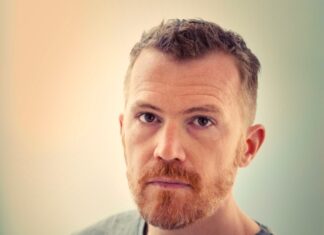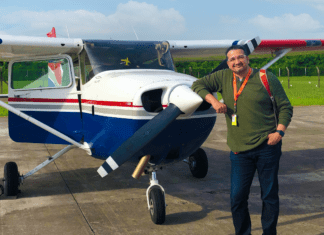Lance Phillips is the author of Video Editing Made Easy with DaVinci Resolve 18; we got the chance to sit down and find out more about his experience of writing with Packt.
Q: What is the name of your book?
Lance: Video Editing Made Easy with DaVinci Resolve 18
Q: What are your specialist tech areas?
Lance: Mainly how to use DaVinci Resolve in post-production such as video editing, audio editing using Fairlight, visual effects using Fusion, and of course what Resolve is traditionally known for Color grading. I also use Unity for 3D content creation such as developing AR apps and I am using Virtual Production to help develop a couple of film projects.
Q: How did you become an author for Packt? Tell us about your journey. What was your motivation for writing this book?
Lance: Packt approached me on LinkedIn to write a book about DaVinci Resolve for them. The previous month I had been approached by a start-up tech company to write an instruction manual for a virtual film training and pre-production software package they were developing. So, when Packt asked me to be an author I had already played with the concept of being an author. The other company wasn’t ready for the manual and had no set date the software would be finished and Packt needed the book now so I agreed to be an author for them. However, I didn’t want to write the book they initially asked me to write as I saw a limited audience for a comprehensive book about Resolve for experts. Instead, I pitched back to them the book I have now written which is a book for beginners who want to learn how to edit content for themselves for their social media, without needing a film degree to understand the jargon.
Q: What kind of research did you do, and how long did you spend researching before beginning the book?
Lance: The book is an accumulation of many years of feedback I have received from students when teaching them how to use DaVinci Resolve. Most of the people I have taught are complete beginners to using DaVinci Resolve and so I know the sort of questions beginners ask, and I have tried to answer those questions in the book. Interestingly, since the book has been published, I have been busy training performance artists and dancers on how to use DaVinci Resolve to edit their showreels that have been shot using green screen or LED wall Virtual Production. Each time I have shown them how to do something based on their questions, I have referred to my own book and said “There is a whole chapter in my book about this”. So, it seems that there is a relevant connection between what I teach and the content of my book. I of course also checked Blackmagic Design’s own 4000-page User Manual on DaVinci Resolve and drew from the fantastic training that Blackmagic Design has given me as one of their Certified Trainers and Training Partners about their software to make sure what I am writing is technically correct. However, my writing style and how I explain things are all my own.
Q: Did you face any challenges during the writing process? How did you overcome them?
Lance: Yes, plenty. When I accepted the author’s contract we were still in lockdown from Covid 19, so there was very little work and I had plenty of time to write. Then all of a sudden we came out of lockdown and work suddenly exploded and I became super busy. Also, I have intoned this in my book’s preface, I was facing personal issues at home such as caring for an elderly relative who unexpectedly came to stay with us and had dementia. It was difficult to get the headspace to write but Packt helped by setting chapter delivery targets and rescheduling them based upon my circumstances if needed. Towards the end of the book, I was temporarily without a house for 3 months due to a protracted house purchase instigated by a crash in the housing market here in the UK last year. This meant it was hard to write as I had no access to a computer to write on, as everything was in storage until I could find somewhere to live. The editors at Packt were very understanding and stayed in touch to see how I was doing. I also had root canal surgery during this time, so my headspace wasn’t always ideal. The way I overcame this was, to be honest with the publishers and see if I could squeeze in a couple of pages a day. If I got stuck trying to explain something I would sleep on it and come back to it the next day and perhaps do a bit more research on it before attempting to write more about it.
Q: What’s your take on the technologies discussed in the book? Where do you see these technologies heading in the future?
Lance: Firstly, DaVinci Resolve is unique as being the only editing software that encompasses video, sound, visual effects, and color editing software as distinct “pages” in one application. This makes it so much easier for content creators to change their minds as they create and go back and change their edits even after they have added sound, and visual effects. This is a much quicker way of working compared to having to do each step traditionally one at a time (i.e. edit first then add sound and effects later). I know that Unity uses DaVinci Resolve to touch up their own Gaming and Virtual Production showreels, so it will be interesting to see how Blackmagic Design moves into this space. Also. Blackmagic Design has already introduced AI into DaVinci Resolve to help with labor-intensive tasks, so it will be interesting to see how this develops further.
Q: Why should readers choose this book over others already on the market? How would you differentiate your book from its competition?
Lance: I don’t like the word competition as every approach is valid. Different books will suit different readers. Having said that, the closest book would be Blackmagic Design’s own book “The Beginner’s Guide to DaVinci Resolve 18”. How my book differs from there is that I try to focus as much on the Cut page as possible as this is a very intuitive editing interface for beginners making short-duration content for social media. I only go to the other pages in Resolve when we reach the limit of what the Cut page can do. Blackmagic Design’s book come out just a month before mine and does not feature the Cut page at all. I also try to come at the book from a complete beginner’s perspective, as a lot of tech books assume that you already understand the jargon that they instinctively have been using for 20 years. So whenever I use a technical word in the book I try and explain what it means first and the history behind the word as often knowing the origins of the word helps us understand its meaning.
Q: What are the key takeaways you want readers to come away with from the book?
Lance: Everyone can edit no matter what your age or background. You just need the patience to learn one step at a time.
Q. What advice would you give to readers jumping into this technology? Do you have any top tips?
Lance: Learn from your mistakes and be patient with yourself. The software can look quite daunting at first, however, if you pace yourself and learn one thing at a time you will make good progress. I personally learn better from making mistakes as I remember them better, as I had to spend more time finding a solution that reinforces it into my memory more than an easy win. Having said that, do celebrate the things you find easy to do in the software as this will motivate you to learn the harder stuff.
Q. Do you have a blog that readers can follow?
Lance: https://lancephillips.home.blog
Q: Can you share any blogs, websites, and forums to help readers gain a holistic view of the tech they are learning? What are the key takeaways you want readers to come away with from the book?
Lance: Blackmagic Design runs their own forum for users of their software and cameras: https://forum.blackmagicdesign.com Also Blackmagic Design’s own website about DaVinci Resolve gives a good overview of what the software can do and they have free intro training videos there for you to follow https://www.blackmagicdesign.com/products/davinciresolve.
Q. How would you describe your author’s journey with Packt? Would you recommend Packt to aspiring authors?
Lance: Yes, I would recommend Packt to aspiring authors. I don’t think I would have finished the book without their constant support, encouragement, feedback, and guidance. Writing is a very solitary experience and you need good objective feedback from a reputable publisher like Packt.
Q. Do you belong to any tech community groups?
Lance: Yes, plenty. As a Blackmagic Design Trainer, we have our own support network for trainers about all things DaVinci Resolve. I am also a member of different Facebook groups for DaVinci Resolve users. Blue Collar Post Collective is a great networking group for editors and others who work in post-production in the film and broadcast industry. I am also a member of the different Unity User and Educators forums.
Q. What are your favorite tech journals? How do you keep yourself up to date on tech?
Lance: Broadcast magazine is a good one for the film industry. I also go straight to the tech giants and read their summary white papers on their tech updates ie. Blackmagic Design, Samsung, Sony, etc as well as Netflix, BBC, etc. Having said that, I learn better from other people, so I ask questions of people I know in the industry at networking groups and share tips and ideas with each other. Then I dig deeper later by going direct to the manufacturer’s online forum.
Q. How did you organize, plan, and prioritize your work and write the book?
Lance: All of the book is split into chapters and there are roughly three sections to a chapter. I would then set targets for myself with Packt to be able to complete each chapter. I also time how long on average it would take me to write a section and try and allocate a solid block of time to write the sections on a regular basis.
Q. What is that one writing tip that you found most crucial and would like to share with aspiring authors?
Lance: Don’t give up. Set small accomplishment targets and celebrate them. For example: “I have now written a third of my book! yeah!!” When I got to over 50% of the book I knew I had to press on. Also, go for walks when you get stuck, it will help clear the mind. You subconsciously will be writing the book as you do other activities so that when you go back to that blank computer screen the words will come.
Q. Would you like to share your social handles? If so, please share.
Lance: Instagram | LinkedIn | Twitter
You can find Lance’s book on Amazon by following this link: Please click here









